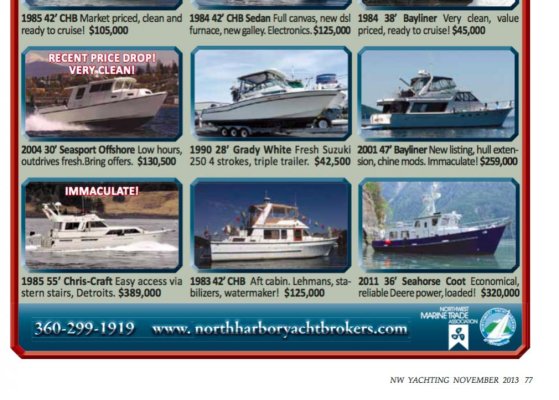markpierce
Master and Commander
- Joined
- Sep 25, 2010
- Messages
- 12,557
- Location
- USA
- Vessel Name
- Carquinez Coot
- Vessel Make
- penultimate Seahorse Marine Coot hull #6
To my knowledge, only seven have been constructed. I've hull #6 delivered in 2012. Newly-built hull #7 is available for sale in Sausalito, CA.
1. While less costly than most new-builds for its size, there are plenty of suitable used boats for sale costing much less.
2. It lacked a flybridge. Didn't want one but the builder now provides an $11,500 option for one.
3. Only has a single-engine (fine with me), but the hull design and internal volume isn't practical for containing a second engine. Nevertheless, 80-horsepower providing up to hull-speed suits me. Latest model has an engine with 50 percent more power, for whatever that's worth.
3. Doesn't have the internal volume to contain a second head/shower and sleeping cabin. I don't need those amenities and prefer a boat not having a cruise-ship-like appearance and resultant windage.
4. Many want a larger or smaller craft.
5. Most boaters would rather have a plastic boat rather than one built of steel.

1. While less costly than most new-builds for its size, there are plenty of suitable used boats for sale costing much less.
2. It lacked a flybridge. Didn't want one but the builder now provides an $11,500 option for one.
3. Only has a single-engine (fine with me), but the hull design and internal volume isn't practical for containing a second engine. Nevertheless, 80-horsepower providing up to hull-speed suits me. Latest model has an engine with 50 percent more power, for whatever that's worth.
3. Doesn't have the internal volume to contain a second head/shower and sleeping cabin. I don't need those amenities and prefer a boat not having a cruise-ship-like appearance and resultant windage.
4. Many want a larger or smaller craft.
5. Most boaters would rather have a plastic boat rather than one built of steel.

Last edited:




